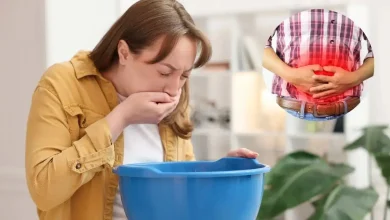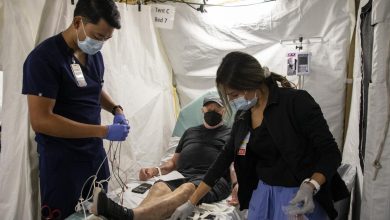Surprise Hair Loss Breakthrough: Sugar Gel Triggers Robust Regrowth

Unintentionally, scientists have discovered a possible new cure for hereditary-patterned baldness, the most prevalent cause of hair loss in the world for both men and women.
The ‘deoxyribose’ component of deoxyribonucleic acid, a sugar that the body naturally produces and aids in the formation of DNA, was the subject of initial research.
Researchers from the University of Sheffield and COMSATS University in Pakistan saw that the fur surrounding the lesions was coming back faster than in mice that had not received treatment while investigating how these sugars heal mice’s wounds when applied topically.
The group made the intriguing decision to look into it more.
They took male mice that had hair loss due to testosterone and plowed their backs clean. Researchers applied a small amount of deoxyribose sugar gel to the exposed skin every day, and in a matter of weeks, the fur in this area underwent “robust” renewal, with long, dense individual hairs emerging.
Because of the deoxyribose gel’s exceptional efficacy, researchers discovered that it performed on par with minoxidil, the topical hair loss treatment sold under the brand name Rogaine.
According to tissue engineer Sheila MacNeil of the University of Sheffield, “our research suggests that the answer to treating hair loss might be as simple as using a naturally occurring deoxyribose sugar to boost the blood supply to the hair follicles to encourage hair growth.”
Androgenic alopecia, also known as hereditary-patterned baldness, is a normal disorder that affects both men and women differently and is brought on by hormone fluctuations, aging, and genetics.
Up to 40% of people may be affected by the disorder, but only two medications have been licensed by the US Food and Drug Administration (FDA) to treat it.
Not everyone who is experiencing hair loss can benefit from over-the-counter minoxidil, despite the fact that it can help to halt hair loss and encourage some regrowth.
Male patients may resort to finasteride (brand name Propecia), an oral medication indicated to maintain testosterone levels in the body, if minoxidil proves ineffective. Approved for male patients only at this time.
In roughly 80 to 90 percent of male patients, finasteride can halt hair loss; but, once started, it must be taken consistently. Unwanted, occasionally serious adverse effects of the medication include depression, decreased libido, testicular or breast pain, and erectile dysfunction.
According to MacNeil and her colleagues’ published study, “the treatment of androgenetic alopecia remains challenging,” under the direction of COMSATS biomaterial researcher Muhammad Anjum.
The group created a non-toxic, biodegradable gel from deoxyribose and used it to treat male-pattern baldness in mice models.
Balding mouse models were also used to test minoxidil, and as a precaution, some of the mice were given a dose of both minoxidil and sugar gel.
Mice administered a gel containing deoxyribose sugar instead of a gel without medication, and the latter group showed signs of new hair follicle growth.
Mice with male pattern baldness showed 80–90% hair regrowth in response to both minoxidil and the sugar gel. However, there was little further difference observed when the therapies were combined.
Throughout the 20-day trial, pictures were taken at different points, and the outcome is evident.
Although the exact mechanism of action of the deoxyribose gel inducing longer and thicker hair growth in mice remains unknown, researchers have seen an increase in skin cells and blood vessels in the vicinity of the treated spot.
According to the researchers, “the larger the diameter and more hair growth, the better the blood supply to the hair bulb.”
Deoxyribose gel may be used to treat alopecia or even to promote hair, lash, and eyebrow regrowth after chemotherapy, if human trials with the gel are successful.
“This is a badly under-researched area, and hence new approaches are needed,” the authors claim.
Although the current studies were limited to male mice, additional investigation may reveal that these natural sugars can also benefit female mice suffering from testosterone-driven alopecia.
“The research we have done is very much early stage,” acknowledges MacNeil, “but the results are promising and warrant further investigation.”
What is Deoxyribose Sugar Gel
Deoxyribose sugar gel is not a standard term in chemistry or biology, but it could refer to a gel-like substance that involves deoxyribose sugar, which is a crucial component of DNA.
Key Points:
- Deoxyribose Sugar: A five-carbon sugar that lacks one oxygen atom compared to ribose, making it “deoxy.” It forms the backbone of DNA by bonding with phosphate groups and nitrogenous bases.
- Gel Context: If “gel” refers to a material, it could involve a matrix or medium where deoxyribose is used for:
- Research purposes, such as DNA gels (e.g., agarose gels used in electrophoresis).
- Biochemical experiments to analyze or synthesize molecules involving deoxyribose.
Could you clarify the intended context? Are you referring to a specific scientific application or a particular process involving deoxyribose?




